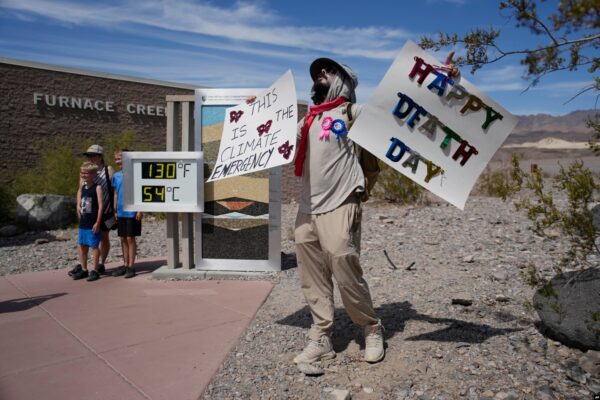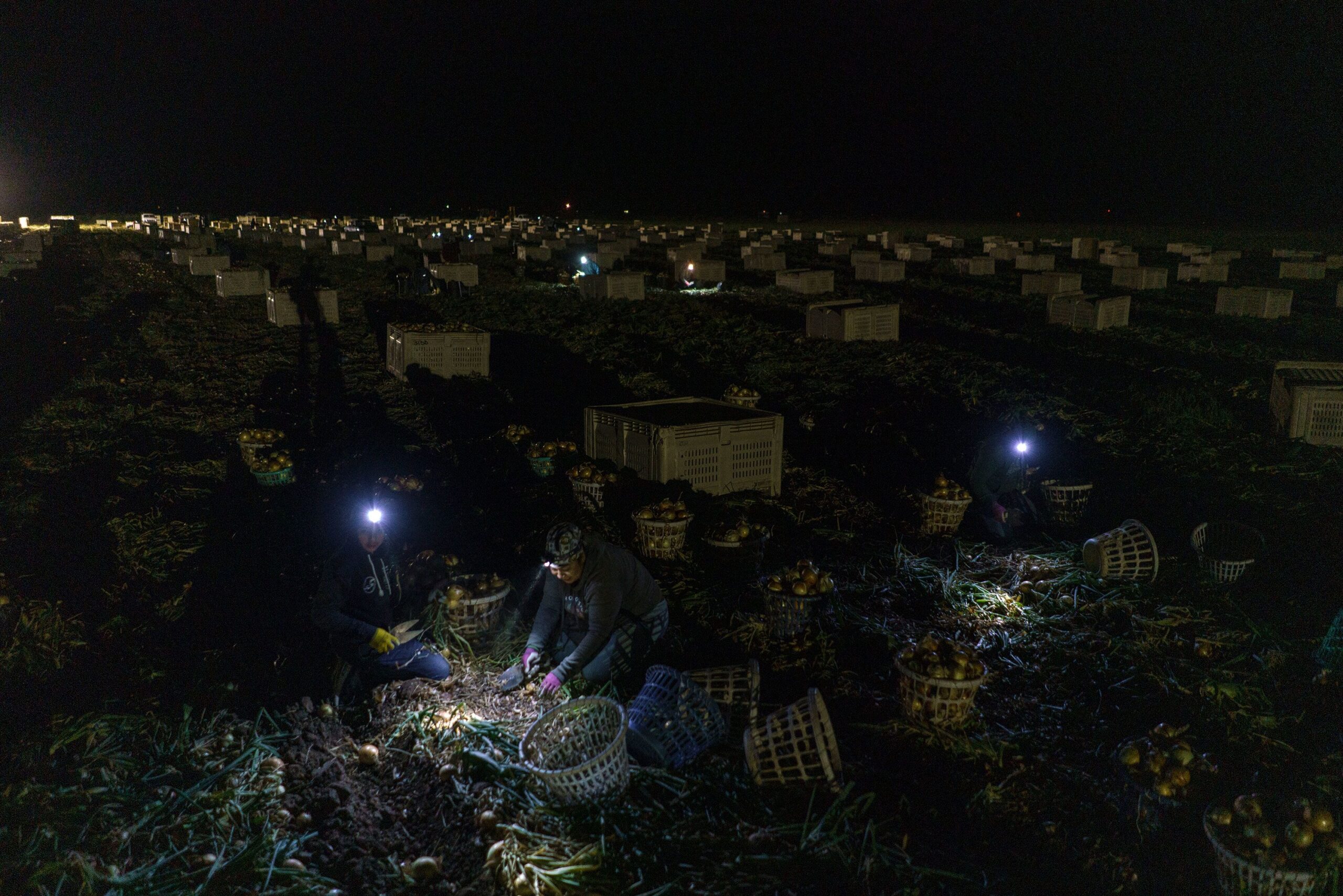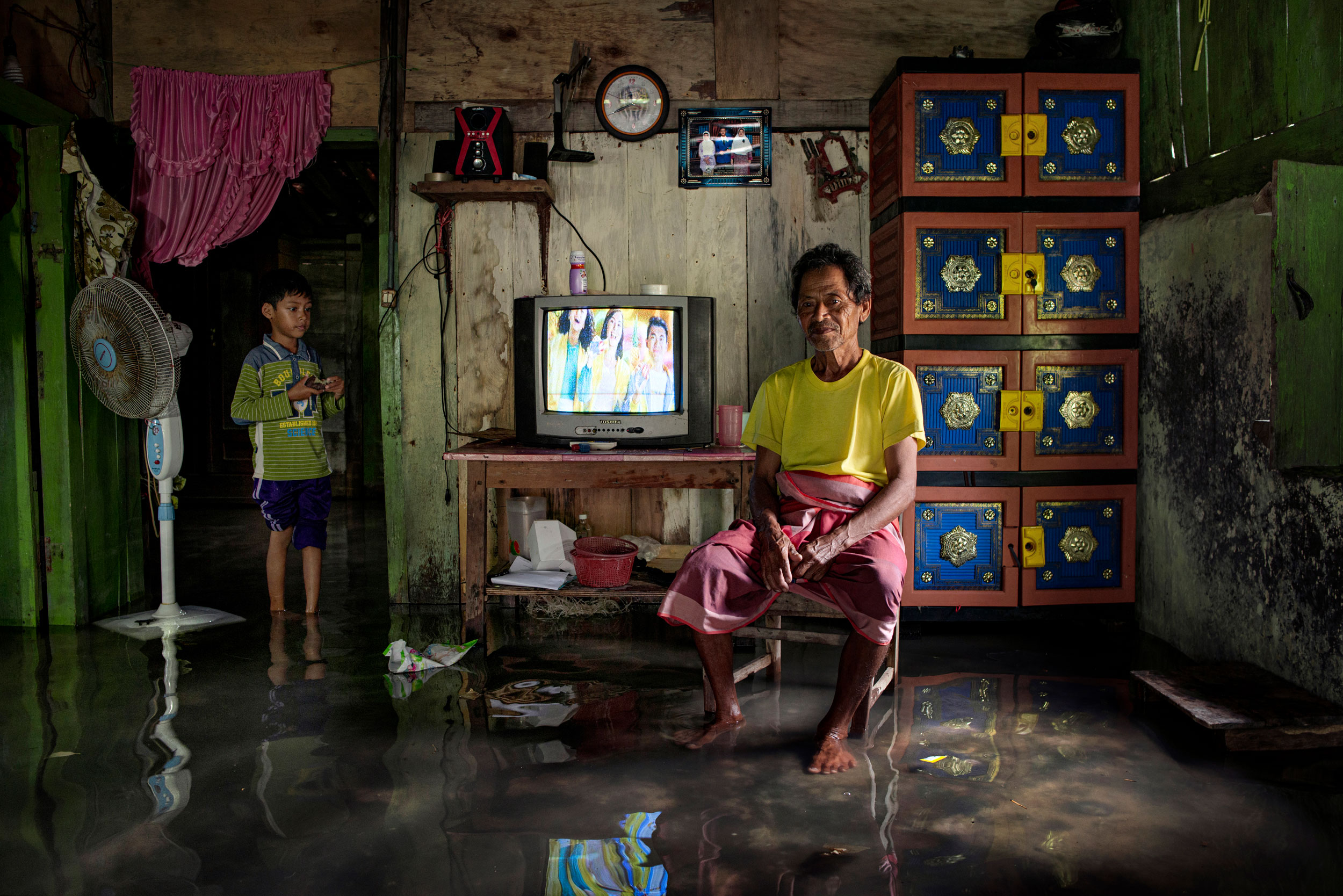Notes
Climate Activism’s Death Valley Daze

A demonstrator protests visitors to Death Valley National Park, Sunday, July 16, 2023, in Death Valley National Park, Calif. Death Valley’s brutal temperatures come amid a blistering stretch of hot weather that has put roughly one-third of Americans under some heat advisory, watch, or warning. The thermometer, at left, is not official but is a popular photo spot. (AP Photo/John Locher)
Climate activists have been ostracized and left morally burdened by the lack of mass, top-down acknowledgment of global heating.
By Conohar Scott
Only in our current climate crisis could a thermometer become a famous photo and selfie spot for Death Valley, California, visitors. The Furnace Creek Visitor Center is the last stop on the road for tourists eager to experience what is popularly referred to as the hottest place on earth.
John Locher’s July 16th photograph appeared in publications worldwide when the Northern Hemisphere was experiencing record-breaking temperatures. On the left side of the frame, we see a family preparing for a holiday snapshot to mark their visit. Dressed casually in shorts and t-shirts, the group strikes a pose for a photographer who we don’t see. The kids, grinning for posterity, stand beside the Center’s thermometer, which records a sweltering 130°.
Published in a week when the Biden Administration announced a raft of additional measures to protect communities from extreme heatwaves and new temperature records were set in Sanbao, China, and Catalunya, Spain, this innocuous family moment symbolizes the widespread cognitive dissonance surrounding the scale of the threat.
Climate science groups predict that the world will reach a critical temperature threshold for climate change as soon as 2030 if behavior does not change. If this happens, the consequences could be catastrophic, including more extreme weather events, rising sea levels, and mass extinctions. Recent extreme weather events should have underscored this threat, yet plenty of people have yet to make the radical behavioral shift needed to combat this crisis. Many still believe either right-wing politicians or cultural commentators who question the science or the price tag.
The actors in Locher’s photograph play out this tension. A solitary environmental protestor dominates the right side of his composition. In contrast to the happy family posing for their holiday snap, this figure is covered in earth-toned desert clothing, protecting his body from the harmful rays of the blistering sun. A code red scarf is jauntily wrapped around his neck, complemented by a curious pair of award ribbons.
He brandishes not just one sign of urgency but two. The “CLIMATE EMERGENCY” sign is adorned with butterflies, likely because they are endangered. The other sign, with colorful letters cynically evoking a birthday, is also a twist on the valley’s foreboding name.
With outstretched arms and a tilting head, the climate protestor’s stance bears a resemblance to Christ on the cross. He is warning us that we will atone for our sin of ignoring global heating. Tellingly, the family that stands in proximity ignores him and his heartfelt pleas, just as we always ignore the preacher wearing a sandwich board quoting biblical tracts and warning of an impending apocalypse.
Given the hesitancy of Western countries to overhaul their economies to meet the goals of the Paris Agreement, it’s no wonder that so many people downplay the scale of the crisis. In this context, it is easy to portray climate change protesters as social gadflies who, in an ideological swoon, are all too willing to sacrifice the ability to fly, own a car, or eat meat.
The value of Locher’s image lies in its capacity to express this dire social division. Without a top-down approach to climate policy, governments leave eco-conscious citizens no option but to internalize their guilt regarding their lifestyle choices. The current debates on climate change also bear a quasi-religious quality by placing an undue emphasis on the environmentalists to atone for their carbon footprint.
Locher’s photograph drives home the risk of a climate change activism centered on moral failure and the danger of further alienating the public at a time when widespread changes to cultural values are paramount.


Reactions
Comments Powered by Disqus